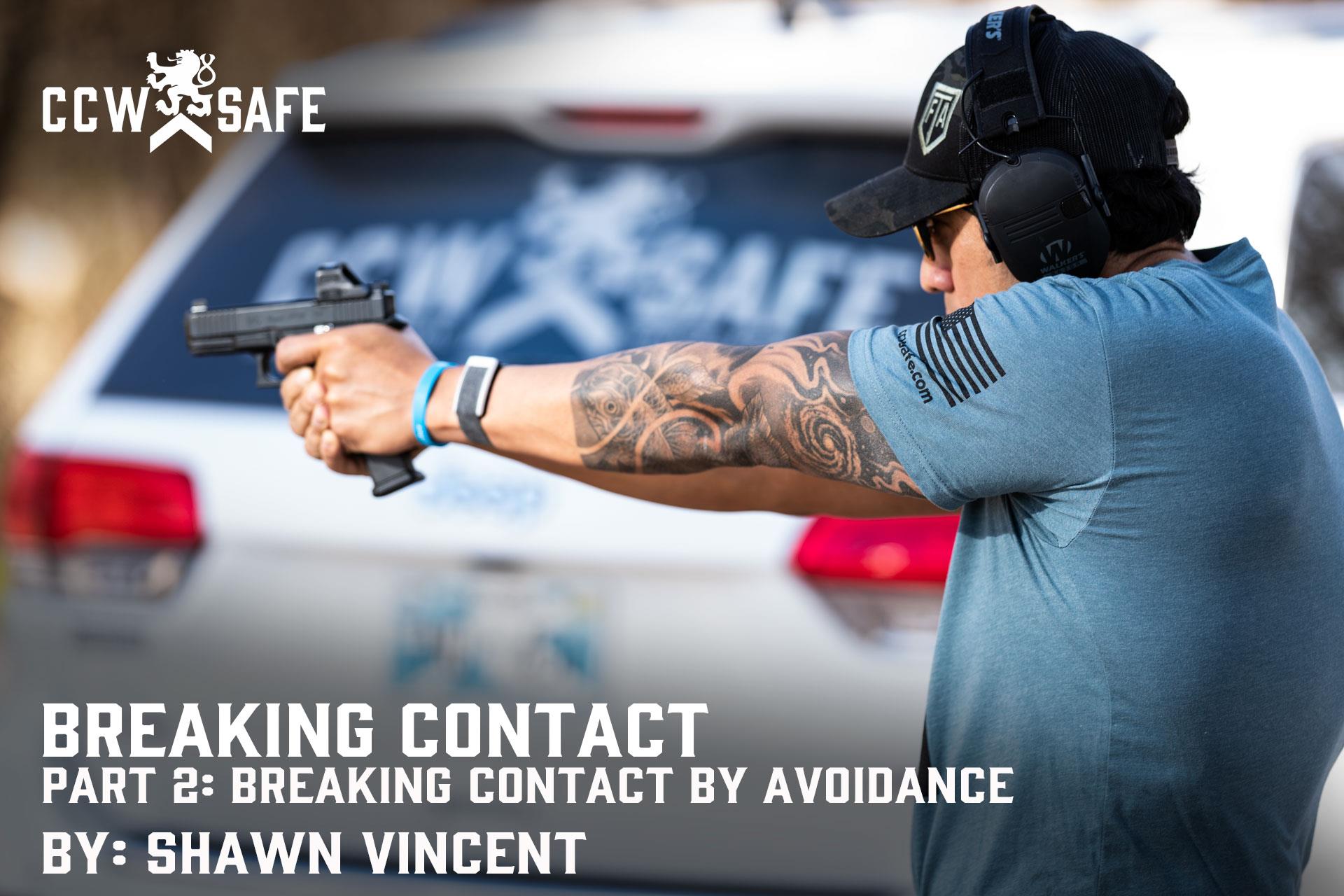
Posted on April 23, 2021
Breaking Contact Pt. 2
Breaking Contact
Part 2: Breaking Contact by Avoidance
Not long ago, I recorded a podcast with firearms instructor Claude Werner, and he gave one piece of advice that encapsulates many of the lessons we’ve learned from studying high-profile self-defense cases, lessons that include the importance of avoidance, de-escalation, disengagement, and the use of less lethal force. Claude said, “Our goal in personal protection is to force a break in contact. We want them to go away, or we want to go away. One or the other.”
Our goal is not to kill an attacker, or even to physically disable them — although in some cases that’s what is required. Our goal is to end the attack, or better yet, to prevent it from happening in the first place. A concealed carrier who conducts him or herself with a mindset focused on breaking contact with a perceived aggressor is likely to regard their firearm as a last-resort and is more likely to deploy less lethal, and therefore, less legally risky tactics and strategies to keep themselves and their families safe.
In a number of the touchstone self-defense cases we’ve explored, the defenders broke Claude’s rule because they actually INITIATED contact rather than making attempts to BREAK contact.
When Ted Wafer, shotgun in hand, opened his front door during a lull in the violent pounding that had awoken him at a quarter to four in the morning, he was startled by the shadowy figure he found standing on his porch. Wafer could have waited in a safe place in his home and dialed 911. He could have turned on the porch light and yelled for the potential intruder to leave. Instead, Wafer left the relative safety of his home and literally opened the door to the deadly encounter that was about to occur. Wafer ended up shooting an injured, intoxicated, unarmed teenaged girl in the head. She was likely lost, confused, and looking for help. Now Wafer is serving a 17-year prison sentence for second-degree murder. Instead of breaking contact, Wafer initiated contact, and it cost him his freedom.
Marcus Kaarma took initiating contact with a perceived intruder a step further. Angry about an unsolved theft from his garage, Kaarma set up a camera to watch for suspicious activity. On an April evening in 2014, just before midnight, Kaarma spotted a dark figure moving on the camera’s monitor. He grabbed a shotgun he kept near his front door, ran around the front of his house, and fired four shots into the darkened, open garage. Two rounds struck a seventeen-year-old foreign exchange student named Diren Dede. Dede was likely “garage hopping,” pillaging neighbors’ garage refrigerators for beer. By all accounts, Kaarma couldn’t see who he was shooting at, meaning he fired before he even made contact with the intruder, and a jury decided the deadly use of force was unjustified. Had Kaarma simply stayed in the relative safety of his home and sternly yelled for the intruder to leave, the deadly encounter would almost certainly have been averted.
During the early hours of New Year’s Day, 2013, Gyrell Lee was celebrating the holiday on the front lawn of his cousin Jamieal Walker’s house. Throughout the evening, the cousins encountered “known trouble-maker” Quinton Epps, who drove by on multiple occasions, each time more intoxicated and verbally antagonizing than the last. Before the final encounter, Lee, a licensed concealed carrier, retrieved his pistol from his car “out of instinct,” he said. He wanted his gun “just in case.” Ultimately, Epps drove by Walker’s house a final time, and the cousins decided to walk a few houses down the street to confront Epps. Like Wafer and Kaarma, Lee left a place of relative safety to INITIATE contact with a perceived aggressor. An argument erupted and quickly turned violent when Walker punched Epps. Epps responded by shooting Walker several times. As Walker fled (he later died from his wounds), Epps turned his pistol on Lee, but Lee fired first, killing his attacker.
Lee was charged with murder, and two years later, a jury convicted him. During closing arguments at trial, the prosecuting attorney told jurors that a reasonable person would have “removed himself from the situation.” In other words, a responsible concealed carrier would have looked for opportunities to BREAK contact with an intoxicated aggressor, and they certainly wouldn’t have voluntarily INITIATED contact.
Andrew Branca, friend of CCW Safe and noted self-defense attorney, frequently warns concealed carriers not to “go to the fight.” If the goal of personal protection is to break contact with an aggressor, then leaving a place of relative safety to meet a potential threat is diametrically contrary to the philosophy. The lesson for concealed carriers and armed home defenders is that, had any of these defenders waited for the fight to come to them rather than going to the fight, the shootings may never have happened — and even if they did, the defenders would have had much stronger legal justification for their use of deadly force.
 |
SHAWN VINCENT- LITIGATION CONSULTANTShawn Vincent is a litigation consultant who helps select juries in self-defense cases, and he manages public interest of high-profile legal matters. If you have any questions for Shawn, or would like more articles like this, let us know belo |